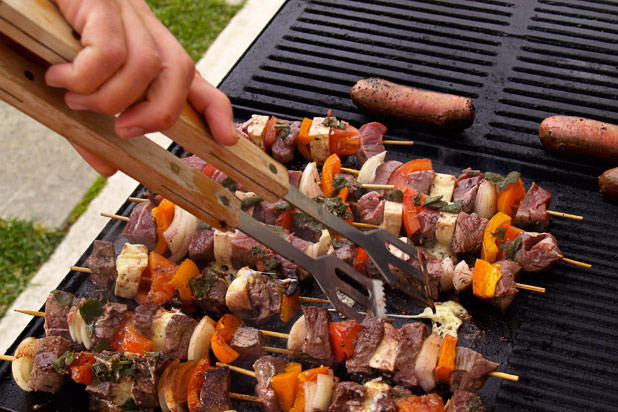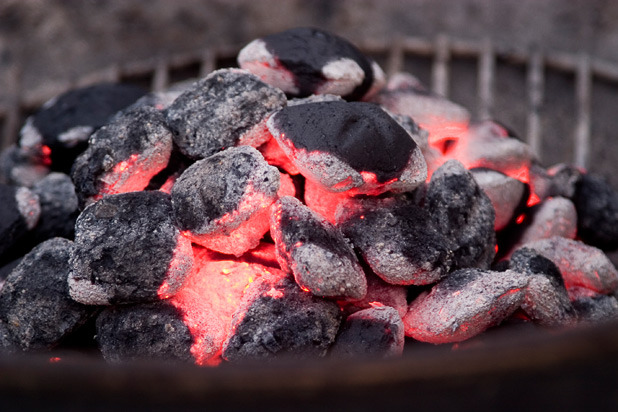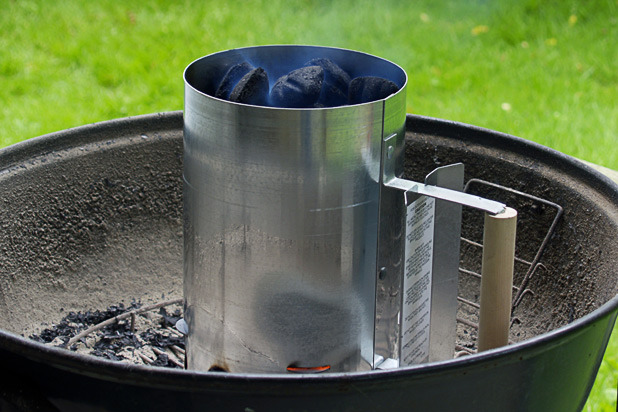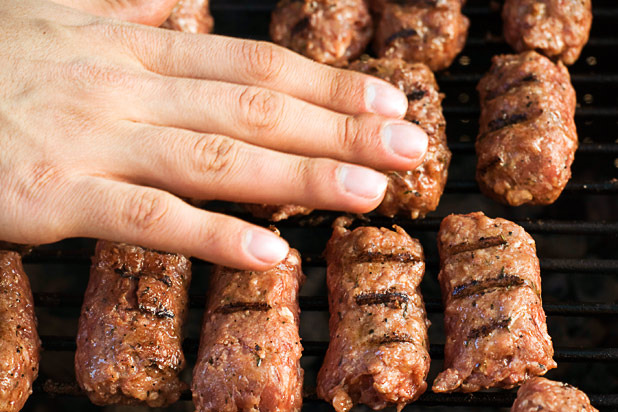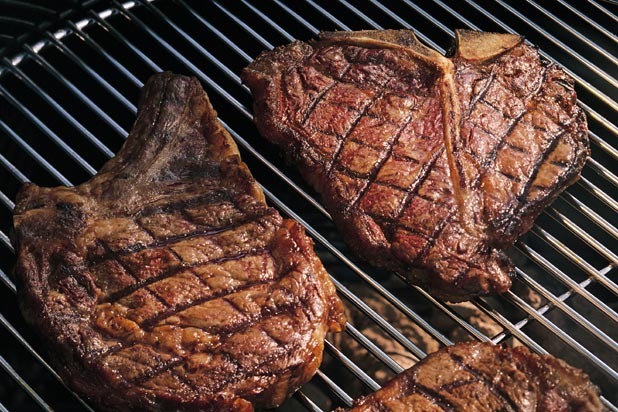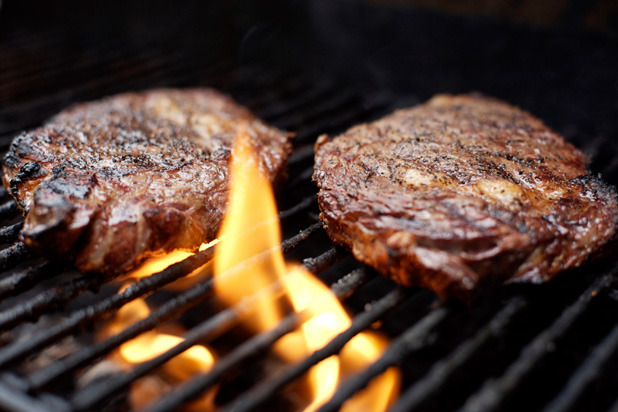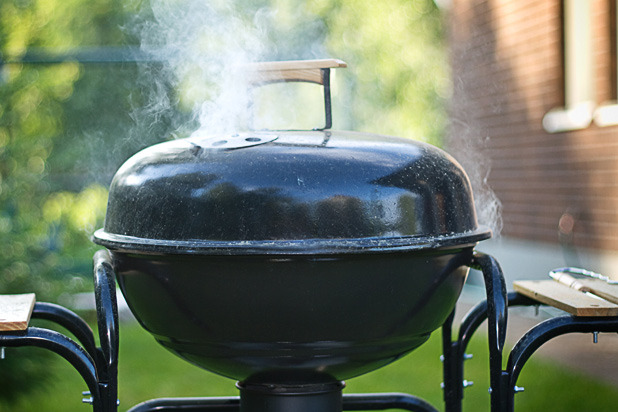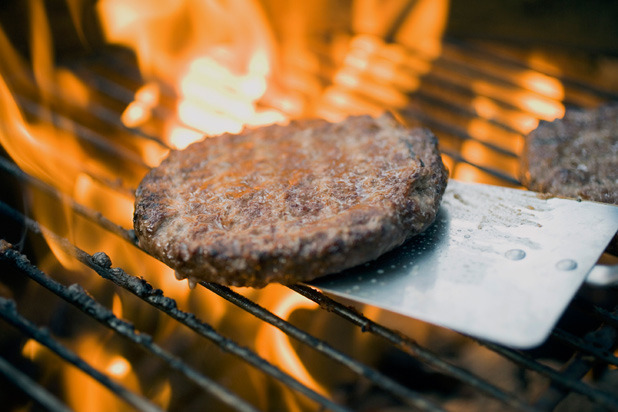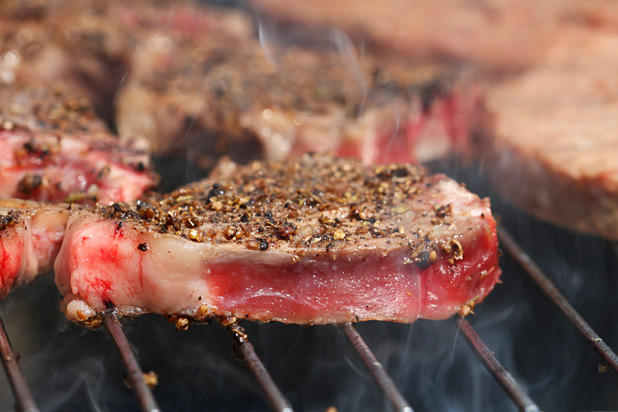10 Grilling Tips For Beginners Slideshow
While gas grills avoid the mess of charcoal, they can never replicate the smoky flavor of grilling over charcoal. It's easy to get overwhelmed by the range of models available, but if you're a beginner, go for a classic model like the Weber Smokey Joe, a durable grill perfect for an apartment balcony or small backyard.
Essential Equipment
The equipment you'll need for grilling depends on the scale of your endeavor, but it really comes down to one essential tool: a pair of long tongs. Other accessories that come in handy are a grill brush, a long-handled spatula, a basting brush, and aluminum foil. A hinged wire basket can be helpful for grilling vegetables or fish, and you'll want a meat thermometer to test the doneness of whole poultry or roasts.
Type of Charcoal
The choice of charcoal comes down to two options: hardwood lump or briquettes. Lump charcoal burns cleaner and hotter, is easier to light, and produces less ash. Briquettes are cheaper and burn longer, but are less pure, containing sawdust and other additives that could affect the flavor of your meat. If you want to take a more natural approach to grilling, go for lump charcoal, but if you're just getting started and want to save money, briquettes will work just fine.
Starting the Fire
There's no need to use lighter fluid when starting the grill, as it is harmful to the environment and can impart an unwelcome flavor to your meat. For the simplest and greenest fire igniter, look for a chimney starter. A chimney starter is a metal cylinder open at both ends. To light, put crumpled newspaper in the bottom section, fill the top with charcoal, and then light the newspaper. It's a safe and economical method to get the coals burning.
Knowing When the Heat Is Ready
Before the meat can go on the grill, you'll need an even, flameless heat of the proper temperature, which can take 15 to 40 minutes depending on your fuel. The heat isn't ready until the charcoal is covered with a fine ash. To judge the heat, use the hand count method: If you can hold your hand an inch from the grill for two seconds, the fire is at high heat, four seconds for medium-high, and six seconds for medium. Move the coals to adjust the temperature — spread them to cool them down, and pile them together to build heat.
Choosing Your Meat
When choosing your meat for the grill, avoid cuts that are extremely thick. Look for chops and steaks between one and two inches. Choose well-marbled pieces and trim off any extra fat to avoid flare-ups. Besides these rules, there is almost no meat that can't be grilled to smoky perfection: From rib-eye to skirt steak, chicken, pork chops, and fish, the most important thing to keep in mind is how each type of meat benefits from different levels of heat.
The Rule of Indirect vs. Direct Heat
Mastering the principle of indirect versus direct heat will vastly improve your grilling results. Push coals to one side and leave an open area on the other side to create variant sections of hot and cool on your grill. Think of the hotter side over the coals as like a frying pan over high heat, perfect for searing steaks. Your cooler side works more like an oven, great for chicken or whole fish.
Click here to see How to Grill a Whole Fish.
Don’t Open Your Grill More Than Necessary
Remember not to open the lid of your grill more than you need to. Though it's tempting to check on your results frequently when just starting out, opening the lid allows heat to escape and can lead to dry meat. Instead, open the lid just once to flip whatever's cooking and let the timing and heat do the rest. If grilling a burger, avoid poking or moving it around except for when it's time to flip.
Timing
The amount of time it takes to grill the meat really depends on the cut of meat, the degree of the heat, and individual preference, and only experience and trial and error will teach you the perfect timing. As an estimate, a 1-inch steak will be grilled rare in eight minutes, and will reach medium in approximately 10 to 12. Use a meat thermometer to adequately judge the doneness of whole poultry or roasts.
Rubs vs. Marinades
When you have the basics down, it's time to start thinking about flavor. Start playing with rubs and marinades. Rubs are mixtures of spices and seasonings rubbed dry on the meat before grilling, and marinades are seasoned liquids that help flavor and tenderize your meat. Both rubs and marinades work best when done in advance. Marinades should always be used under refrigeration, but a rub can be done sooner before grilling time and at room temperature. Start out with simple preparations, like a vinaigrette marinade or a crushed pepper and spice rub, and experiment from there.

